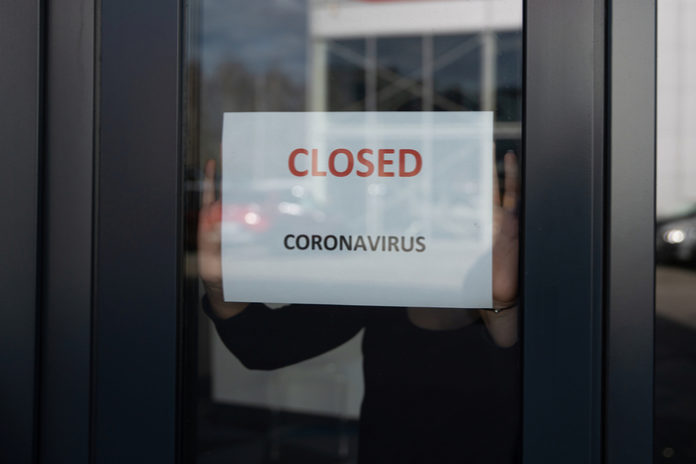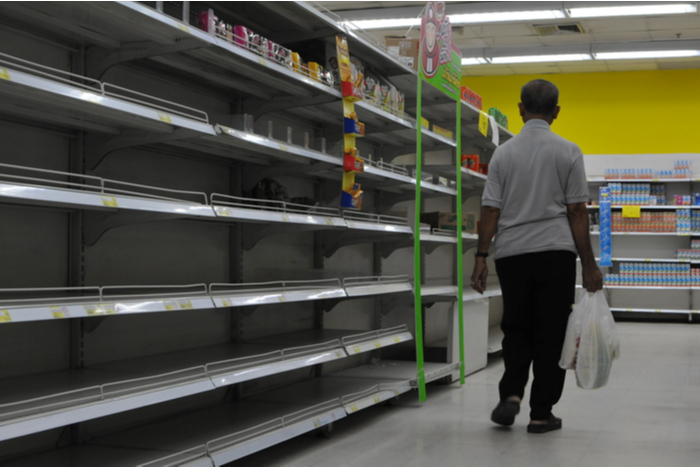

The UK retail sector had already faced an uncertain economic future due to Brexit and changing consumer habits, but it’s no secret by now that the Covid-19 pandemic further spiralled the industry into a whirlwind of unprecedented uncertainty.
So far, retailers have had to contend with temporarily closing their stores in affected areas around the globe, accommodating sick or worried staff, and dealing with supply chain disruptions. The closure of their stores also means most retailers will endure a massive blow to their sales and profits for the year.
With many countries now in lockdown, it’s unlikely that such draconian measures will last infinitely – but the question is “when”. Once the Covid-19 turmoil has settled and death and infection rates come under control, when will retail return to normal? And how long will it be before the retail sector reaches its original levels of trading – if ever?
Last week in China, where lockdown measures have been relaxed, the world was greeted with images of people allowed outside after seeing infection rates slow down.
Last month, The Economist reported that Chinese retail sales were down 24 per cent over the coronavirus period, and many analysts have said that although there have been some positive reports, it could take a while before things go back to normal.

Professor Joshua Bamfield at The Centre For Retail Research said it would take UK retail about six months or more before retailers can manage to reach previous levels of sales.
“It will be slow and shoppers will remain cautious for a long time,” he told Retail Gazette.
Ciaran Bollard, chief executive of ecommerce service Kooomo, argued that China’s major cities aren’t anywhere near as crowded as before even after the lockdowns were lifted.
However, he highlighted that Alibaba’s shipping activity approaching pre-outbreak levels was a positive sign, as people resumed work and roadblocks came down.
“This gives hope that the new ‘normal’ won’t be totally alien to us all,” he added.
Jake Knowles, senior retail consultant at BJSS, said it was going to be a “long, slow journey to recovery” as many workers will have lost their jobs, disposable income would be significantly lower, subsequently impacting overall retail sales.
“China’s retail giant JD.com pivoted to ecommerce following the Sars outbreak in 2004 and is therefore set-up to perform well in crisis conditions,” he explained.
“Their business model allows them to remain agile, pivot quickly and focus on the distribution of highly in-demand products at a particular time.
“For example, over just four days in January, JD.com sold over 126 million masks to its customers.”
“It will be slow and shoppers will remain cautious for a long time”
Currently, the UK government has commanded non-essential shops to close their doors, with essential stores – such as groceries and pharmacies – able to stay open. Supermarkets in particular have faced an unprecedented demand due to the pandemic.
While the BRC told Retail Gazette that it is unsure as to when UK retail could return to normal.
“We’re clearly far from things being over, and the UK is looking more like Italy/Spain than it is like China at the moment,” the lobby group added.
Bamfield said the UK was also likely to see a recession for at least six months.
“This may be broken up into several period of lockdown followed by some relaxation of regulations, then another lockdown or, as perhaps is more likely, tough controls for three months, including ‘non-essential’ shops remaining closed for most of that period,” he explained.
“Shops may reopen in stages. It all depends on whether the number of deaths and new infections will continue to fall.”
As a result of less socialising, many Brits – especially those lucky enough to keep their jobs during the lockdown – are likely to hoard cash due to a dramatic cut in non-essential expenses such as dining out, travelling or shopping. This could potentially cause a surge in the retail industry once lockdown is lifted.
However, chief executive of retail foreign exchange Change Group International, Sacha Zackariya, argued that consumers may prefer spend their saved cash on travel.
“People can’t wait to be allowed to leave their homes and return to the new normal,” Zackariya said.
“Many people will want to travel, and use up much of that cash they have been hoarding during this period of lockdown.”
Leading retail consultant Graham Soult argued that once lockdown is lifted people will want to go back to normal, but there was no guarantee people will have the spare cash to do so.
“Although the government is supporting some workers, others who are self-employed aren’t being supported, so there is no guarantee that they’ll be able to go out straight away and spend after the lockdown,” he told Retail Gazette.
“The UK is looking more like Italy/Spain than it is like China at the moment”
It seems consumers may have already spent enough cash on shopping, particularly in the grocery sector, where panic-buyers scurried to grab staple products as the pandemic escalated in the UK – prompting grocers to introduce rationing rules for the first time since World War II.
Earlier this week, Kantar published data that found Brits had spent an additional £1.9 billion on stockpiling groceries in the run-up to the lockdown. In addition, March was the biggest month on record for UK grocery sales after spend totalled £10.8 billion in the past four weeks alone.
Nottingham Business School research associate Nelson Blackley said that after the lockdown, UK retail would continue to see a significant increase in online sales – especially in grocery as shoppers seek to avoid busy supermarkets.
Soult agreed, highlighting how people who weren’t tech savvy before have now had to utilise ecommerce platforms. He also argued that it could go the other way, in that consumers may scurry back to the high street or shopping centres due to a prolonged use of their devices – or because of cabin fever.

“The lockdown has pushed people into the online direction,” Soult told Retail Gazette.
“It has also encouraged people to use contactless payments. After this, we’ll have shoppers who can obtain goods in different ways.”
The forced shift in consumer balance towards ecommerce during the lockdown has meant a scaling down of the physical channel for most retailers. Although stores will undoubtedly be revived when isolation measures are lifted, there will also be a lasting effect.
Retailers may need to consider their long-term plans as the enforced closure of shops has seen customers restricted to buying what they need instead of what they want. This may indeed see a positive change in shopping habits as consumers could increasingly adopt more sustainable habits in the future and become more mindful about their shopping behaviours.
As of now, it may be difficult to predict when things will resume back to normal. But retailers must not be naive to underestimate – or overestimate – consumers’ understanding of what “normal” is once lockdown is lifted.
Coronavirus is a defining moment in history that may set in motion a new standard of consumer behaviour. Is the latter a bad thing? Not necessarily. But retailers will have to build on these changes or adapt to them.
Click here to sign up to Retail Gazette’s free daily email newsletter

